new posts in all blogs
Viewing: Blog Posts Tagged with: 2007, Most Recent at Top [Help]
Results 1 - 25 of 220
How to use this Page
You are viewing the most recent posts tagged with the words: 2007 in the JacketFlap blog reader. What is a tag? Think of a tag as a keyword or category label. Tags can both help you find posts on JacketFlap.com as well as provide an easy way for you to "remember" and classify posts for later recall. Try adding a tag yourself by clicking "Add a tag" below a post's header. Scroll down through the list of Recent Posts in the left column and click on a post title that sounds interesting. You can view all posts from a specific blog by clicking the Blog name in the right column, or you can click a 'More Posts from this Blog' link in any individual post.

By:
Becky Laney,
on 9/5/2016
Blog:
Becky's Book Reviews
(
Login to Add to MyJacketFlap)
JacketFlap tags:
2007,
series books,
MG Fiction,
library book,
MG Fantasy,
MG Adventure,
books reviewed in 2016,
books reread in 2016,
MG Action,
Add a tag
Alcatraz Versus the Evil Librarians. Brandon Sanderson. 2007. Scholastic. 308 pages. [Source: Library]
First sentence: So there I was, tied to an altar made from outdated encyclopedias, about to get sacrificed to the dark powers by a cult of evil Librarians.
Premise/plot: Alcatraz Smedry is not your ordinary boy, even before he learns of his special ancestry and his magical powers. He's a foster kid with a talent for breaking things--no matter how big or how small. On his thirteenth birthday he receives a package in the mail--from his father--a bag of sand. He thinks, at first, it's a joke. He doesn't think: Wow! I bet my life is going to change forever and ever! On his birthday, he "breaks" the stove and accidentally catches the kitchen on fire. His foster care worker shows up and steals the sand, though he doesn't realize it just yet. She'll be back for him in the morning with a new foster home ready to take him in. Before she shows up, his GRANDFATHER shows up to "rescue" him. Alcatraz was clueless he had a grandfather. And his grandfather is so weird and odd and a CHARACTER. But it's either go with his grandfather....or....face a hitman with a gun. So Alcatraz's second day as a thirteen year old is something....
My thoughts: I love this one. This is my first time to reread the series. Or at least I think it is! Readers meet Alcatraz, his grandfather, Bastille (a knight around his own age), Quentin, and Sing Sing. (I hope I didn't forget anyone!) Their mission is to infiltrate the downtown library and get back the sand....it won't be easy.
The style of this one is half the fun. I do like some of the commentary quite a bit!
© 2016 Becky Laney of
Becky's Book Reviews
My Cat Copies Me. Yoon-duck Kwon. 2007. Kane/Miller. 40 pages. [Source: Review copy]
First sentence: My cat copies me. We tunnel under newspapers, and crouch behind doors. If I hide under the desk, or in the closet, she hides with me.
Premise/plot: A young girl loves, loves, loves her cat. The book shows the two interacting with each other--copying each other. It's a sweet, must-have for cat-lovers.
My thoughts: I absolutely LOVE, LOVE, LOVE this one. It's one of my favorite picture books that I've discovered since I began blogging ten years ago. I love the writing. I love the illustrations. I love that the first half shows the cat copying the girl, and that the second half shows the girl copying the cat.
Text: 5 out of 5
Illustrations: 5 out of 5
Total: 10 out of 10
© 2016 Becky Laney of
Becky's Book Reviews

By:
Becky Laney,
on 8/5/2015
Blog:
Becky's Book Reviews
(
Login to Add to MyJacketFlap)
JacketFlap tags:
Historical Fiction,
adult fiction,
2007,
Historical,
coming of age,
coming-of-age,
2000,
library book,
books reviewed in 2015,
Add a tag
Wish You Well. David Baldacci. 2000/2007. Grand Central Publishing. 432 pages. [Source: Library]
I enjoyed reading David Baldacci's Wish You Well. That is, I "enjoyed" it as much as one can enjoy a book with so much heartache in it. Some of the heartache was completely predictable, I won't lie. But some of it wasn't.
Readers meet Lou (Louisa) and Oz (Oscar). These two undergo a lot in the course of a year. The family is in a car crash. Their father dies at the scene. Their mother is left in a coma, of sorts. She's able to eat and drink, but, not to talk or walk. She's essentially dead to the world, unable to give any sign to anyone that she is still in there. The two go to live with a great-grandmother in Virginia. This great-grandmother raised their father. Her name is Louisa. Life in the country is certainly different than life in New York City, but the two adjust quickly. They enjoy spending time with Diamond, an orphan boy around their age, and Eugene, a black man who lives and works with them on the farm. Their mother lives with them as well. They manage to nurse her and do all the farm work as well. One man, a young lawyer, takes it upon himself to visit the family often. Cotton reads to Alicia (the mother) as often as he can. The children quickly bond with him. So they've experienced loss certainly, but, they've made new friends as well.
Is life perfect? Not really. Oz and Lou would give anything to have their parents back. And Oz especially is still counting on his mom waking up again. Lou secretly wants this just as badly. But she's older, and "wiser," and doesn't want anyone to know that she believes in wishes and happy endings. She can't help herself for wanting and wishing, but, she's ashamed of it at the same time. She hates herself for it in a way.
The book chronicles their adventures and misadventures in the country. The setting is 1940, by the way. I won't spoil the book; yes, a few things are predictable. But not everything in my opinion.
Wish You Well is a coming-of-age story written for adults. Don't be confused by the child narrator, this one really is an adult book.
What I liked best was the characterization and the setting. I liked Lou and Oz and Diamond. I liked Louisa and Cotton. I liked spending time with them. And the historical setting was a nice
touch. © 2015 Becky Laney of
Becky's Book Reviews
The Children of Hurin. J.R.R. Tolkien and Christopher Tolkien. 2007. HarperCollins. 313 pages. [Source: Library]
Did I enjoy reading The Children of Hurin? Yes! Very much! After reading The Silmarillion last week, I wanted more new-to-me Tolkien, and The Children of Hurin was an excellent choice. And a very reader-friendly excellent choice I might add. This is a longer version of a story contained in The Silmarillion. (I believe Tolkien wrote several adaptations or versions of this story. Perhaps one or two poetic form. But this one is prose. I'm relieved that it is.)
So Turin is hero--tragic hero--of Tolkien's Children of Hurin. And this reads like an Greek tragedy. A hero doomed because of a fatal flaw, one that is almost fundamental to who he is. It isn't a happy-happy read in other words. But it is full of spirit and adventure and love. It features several strong and brave women who love with all their hearts and minds and who will truly do anything to stand by who they love. There's a fierceness to the friendships as well. One thing I can confidently say, Children of Hurin is not boring.
I won't share many details. But you should know that it is about the ongoing battle between good versus evil. And it does feature a dragon.
I definitely liked it. I'm not sure if it was LOVE. But I definitely enjoyed it more than Book of Lost Tales Part One. © 2015 Becky Laney of
Becky's Book Reviews
Dragon Slippers. Jessica Day George. 2007. Bloomsbury USA. 324 pages. [Source: Library]
I'm so glad I decided to revisit all three books in Jessica Day George's dragon series. I remember loving these when they first came out, but, I just haven't made time for a reread. Until now!
In Dragon Slippers, readers meet Creel, our heroine. Her aunt wants to "sacrifice" her to the local dragon, so that she can be "rescued" by a hero--hopefully a wealthy hero who will fall madly in love with her and want to marry her and support his wife's family. Creel doesn't particularly want to be left outside the dragon's cave to wait and see if a dragon or a hero comes her way. She wants to be a dressmaker. But if waiting for a dragon is the first step to her new life, well, she'll take it.
So she meets a dragon who gifts her--for better or worse--with a pair of shoes--slippers. They are blue; they are beautiful. She then goes on her way to her country's capital--the royal city. She's going to do her best to find a job in the dressmaking district. On her way there she may just meet another dragon, and, this dragon will become one of her best, best friends. His name is Shardas, and, I have to admit I LOVE, LOVE, LOVE him. His hoard is not shoes--like the previous dragon--it is glass, windows to be precise.
Creel's new life has begun. And it is never dull! On her first day in town, she accidentally meets a foreign princess, and a member of the royal family--though a second son--his name is Luka. Luka and Tobin (his bodyguard) help her find a place to stay and a place to work.
I loved this one. It's a great adventure story with humans and dragons. It was just a joy to rediscover this one.
© 2015 Becky Laney of
Becky's Book Reviews
Her Royal Spyness (Her Royal Spyness #1) Rhys Bowen. 2007. Berkley. 336 pages. [Source: Library]
I wanted a quick, light read: light on history, light on mystery. I was satisfied enough with Her Royal Spyness by Rhys Bowen. Why "satisfied enough"? Well, the book moved quickly for me. I was interested in the time period it was set. (England, spring of 1932) I was also curious about the "royal" aspect of it. (The heroine is 34th in line to the throne.)
The premise of this one is simple. Lady Georgiana (Georgie) may be royal, but, she's also young and poor. Being royal makes her eligible for making a good marriage, perhaps, most likely an arranged marriage. But it keeps her from getting a regular job and earning her own way. To escape a social event designed to match her to someone she doesn't want to marry, she lies to her family and arranges to go to London. Her brother is allowing her to stay at his place--the family's residence--but he's not allowing her to take any servants or providing any money to hire her own once there. She'll be completely on her own for however many weeks she chooses to escape. She'll get reacquainted with some people, meet several new people, etc. She'll also socialize with the queen on occasion. (The queen wants her feedback on the married American woman, David is infatuated with.) One of the people she meets is a potential fling. His name is Darcy. The two could have some light fun together. But. She's uncertain about him and if she even wants to have a fling.
So. The mystery. A body is found in the bathtub. A dead body, of course. (I kept thinking of Whose Body? by Dorothy Sayers). She discovers the body, and since it's in her brother's house, well, she fears that everyone will conclude that her brother "Binky" did the crime...
I found it entertaining enough. I didn't find it to be the perfect read, however. In terms of characterization and dialogue and description. It kept me reading at the time, but, I'm not sure it's one that will stick with me.
Still, I think I will read one or two more in the series to see if it improves.
ETA: I have read about three or four chapters in the second book. Enough to know that I don't think it will suit me after all. It's just not a good match for me.
© 2015 Becky Laney of
Becky's Book Reviews

The picture book
Winston of Churchill: One Bear's Battle Against Global Warming by
Jean Davies Okimoto with illustrations by
Jeremiah Trammell teeters between being preachy and instructive and clever and witty.
Winston is a polar bear near a town named Churchill in Manitoba, Canada. He wears glasses and is always holding a lit cigar, much like another
Winston named Churchill. Bear Winston is in a position of polar bear leadership, much like British Prime Minster Winston was in a position of human leadership. The polar bears are facing the melting of ice in Hudson Bay due to human pollution, much like the Brits were facing invasion by the Na...No, that's kind of a stretch. But when Bear Winston rallies his bears, he does
sound a lot like British PM Winston rallying his people. '"We will for fight ice," boomed Winston. "We shall defend our island, whatever the cost may be. We shall fight on the beaches. We shall fight on the landing grounds. We shall fight in the fields and in the streets. We shall fight in the hills. We shall never surrender."'
That's what makes this book clever and witty, the whole whole bear-doing-Churchill thing. Because a polar bear isn't Winston Churchill, and the incongruity is funny.
But then you get to the lesson stuff. '"Ice is melting because it's getting too warm around here and people are doing it with their cars and smoke stacks. And cutting down trees."' I'm not saying that's not true, but instruction is awkward, to say the very least, in fiction.
Winston of Churchill even includes a page from a book Winston of Churchill wrote on global warming to make sure to get the educational stuff across. Though I'm going to take a wild guess that I'm not the only person who skipped it.
But here's the clever and witty thing about that book written by Winston of Churchill--Winston Churchill wrote books, too!
The illustrations in this book are marvelous and very engaging, and I think kids will be attracted to the bears and some of the humor. Some will be left recalling that human actions are wrecking ice for those neat bears. It will probably be adults with some knowledge of a World War II historical figure who will enjoy this book the most.
Winston of Churchill won the
Green Earth Book Award for Children's Fiction in 2008.

By:
Becky Laney,
on 12/21/2014
Blog:
Becky's Book Reviews
(
Login to Add to MyJacketFlap)
JacketFlap tags:
picture books,
Christmas,
2007,
2009,
2014,
1912,
1922,
review copy,
library book,
1957,
1816,
books reviewed in 2014,
1823,
Add a tag
And Then Comes Christmas. Tom Brenner. Illustrated by Jana Christy. 2014. Candlewick Press. 32 pages. [Source: Review copy]With some picture books, you almost have to read them a few times before you decide if you like them or not. Such is the case with Tom Brenner's And Then Comes Christmas.
And Then Comes Christmas is all about establishing atmosphere and celebrating traditions. Atmosphere is established by description and detail. Phrases like "bare branches rake across the sky" and "romp in snow as smooth as bedcovers." Traditions are celebrated: choosing a tree, decorating a tree, making cookies, wrapping presents, reading stories, attending programs, making crafts, seeing Santa at the mall, etc. Some traditions will likely be familiar. Some may not be. Not every child gets to play in the snow before Christmas--or after Christmas, for that matter! But all children could choose to make paper snowflakes to decorate their windows.
It is a book that slowly and gently counts down to Christmas. (Though not with actual numbers.) There is a certain pattern to it...multiple when/then passages.
I think my favorite when/then passage is:
When elves and reindeer appear in stores, and small trains race through toy villages, and piles of presents nestle in cotton drifts...Then hop from foot to foot, waiting to sit on Santa's knee."
I like this one well enough. But I would hate to have to diagram any of these sentences!
How the Grinch Stole Christmas. Dr. Seuss. 1957. Random House. 64 pages. [Source: Review copy]I love it. Of course I love it. How could I not? Now, I will admit that I didn't read the actual book until I was an adult. It wasn't one of the Seuss books that I owned growing up. But the christmas special--the cartoon--is one I've seen dozens and dozens of times. The book itself is lovely. If you love one, you'll love the other.
So in case you're unfamiliar with the book or special, The Grinch hates Christmas. His neighbors, the Whos in Who-ville, love Christmas. He is super-cranky this year, and, he decides to steal it. He thinks Christmas is all about the stuff. Take the stuff, do away with it altogether, right? Wrong. The Whos in Who-ville teach the Grinch a lesson about joy.
One of my favorite things about it is it's just SO quotable. Here are a few of my favorite lines:
Every who down in Who-ville liked Christmas a lot...But the Grinch, who lived just north of Who-ville, did NOT!
And THEN they'd do something he liked least of all! Every who down in Who-ville, the tall and the small, would stand close together, with Christmas bells ringing. They'd stand hand-in-hand. And the Whos would start singing. They'd sing! And they'd sing! AND they'd SING! SING! SING!
Then he slid down the chimney. A rather tight pinch. But, if Santa could do it, then so could the Grinch.
Then the last thing he took was the log for their fire! Then he went up the chimney, himself, the old liar.
It came without ribbons! It came without tags! It came without packages, boxes, or bags!"
'Twas the Night Before Christmas. Clement C. Moore. Illustrated by Jessie Willcox Smith. 1823/1912. HMH. 32 pages. [Source: Review copy]I've read 'Twas the Night Before Christmas plenty of times before. But this is the first time I've read the edition of the poem published as a picture book in 1912 with illustrations by Jessie Willcox Smith.
The poem itself is as delightful as it ever is. I think this is a poem that feels familiar no matter what. You don't have to seek it out year after year. It just finds you and sticks. It's just part of the Christmas culture. (I love the Sesame Street play starring Bert and Ernie as featured in Muppet Family Christmas.)
It was interesting to see the illustrations from this time period. (You may see the illustrations at
project gutenberg.) Did I love the illustrations? Not particularly.
The Nutcracker and the Mouse King. E.T.A. Hoffmann. Adapted by Wren Maysen. Illustrated by Gail de Marcken. 2009. 56 pages. [Source: Review copy]I am not as familiar with the original story (1816) as I am the story of the ballet. (The two are different.) It's an odd book. I'll be honest. It is just as strange as Alice in Wonderland. (Though, of course, The Nutcracker and the Mouse King came decades before Alice.)
Marie Stahlbaum is the heroine of The Nutcracker and the Mouse King. The book opens with Marie and her brother, Fritz, playing together and waiting, waiting, waiting for all the delights of Christmas. They are waiting to enter the large drawing room where the tree is, and where the presents are. Their mother and father are there as well. As is Godfather Drosselmeier. There is a new doll, Clara, for Marie. There are new toy soldiers for Fritz. And there is a lovely toy castle, Marzipan Castle, for them both. The Nutcracker is a gift for the whole family. Marie does take special interest in it, this interest remains despite the fact that Fritz breaks the Nutcracker when he's showing off.
Marie stays up past her bedtime in the drawing room. This is when things get strange: seeing Godfather Drosselmeier on top of the clock, seeing all the mice attack, seeing the Mouse King, etc. She witnesses a battle. Towards the close of that battle, she throws a slipper at the wicked Mouse King.
Marie awakens in bed the next day. Her mother had found her bleeding on the floor near the tree and toy cupboard. She spends the next few days at least in bed. Spending so much time in bed might seem horrible, and, perhaps Marie found it to be so part of the time at least. But her Godfather tells her strange stories which she believes of course.
Plenty of The Nutcracker and the Mouse King is the Godfather's strange, strange story. This story is about "a king, a queen, some mice, and a young princess named Pirlipat." The story is rich in detail:
Princess Pirlipat was very lovely. She had flawless white skin, with bright blue eyes and flowing locks of golden hair. The generals, noblemen, and ministers of the state all told the king and queen that they had never seen a baby like the princess. Not only was the princess beautiful, but she was also born with two perfect rows of teeth!
The queen insisted that Princess Pirlipat's cradle always be guarded. The royal guards were placed at Pirlipat's door, and directly beside her cradle sat six nurses...and with these six nurses sat six big cats. The nurses had strict orders from the queen to keep one cat in each of their laps and pet them all day and all night so that they would never stop purring. This was indeed strange. No one knew why the queen went to such lengths to protect her princess, but still, every night, the sound of purring cats echoed throughout the castle. But the queen had a very good reason to be on guard, for a curse had been placed on her family.
Readers learn of the family curse, of course. And it's something. The story becomes more and more bizarre as it unfolds. But to Marie, it is completely captivating.
Meanwhile, we have not seen the last of the mice or their dreadful King. Marie knows that sooner or later the final battle will come....
There does come a time when the Nutcracker takes Marie to his magical, fantastic home in Toyland.
So readers see Marie awaken again from yet another dream. Will Marie's ultimate dream come true?
This story is so strange and bizarre and rich in detail--pure fantasy.
The Velveteen Rabbit. Margery Williams. Illustrated by William Nicholson. 1922/2014. Random House. 48 pages. [Source: Review copy] Do you know what it is to be real? One little Christmas bunny will learn this and plenty of other life lessons in Margery Williams' classic tale The Velveteen Rabbit.
The Velveteen Rabbit opens with a young boy receiving a rabbit for a Christmas present. All is lovely for the rabbit that first day. But the toy is quickly forgotten. He becomes one toy of many, many, many toys. He's not exactly special to the boy or the other toys. In fact, I'd say the other toys bully him a bit. All except for the Skin Horse, the oldest toy in the nursery. It is this horse that tells the Rabbit all about being real, what it takes to be real, what it feels like, how it changes you, etc.
"Real isn't how you are made," said the Skin Horse. "It's a thing that happens to you. When a child loves you for a long, long time, not just to play with, but REALLY loves you, then you become Real." "Does it hurt?" asked the Rabbit. "Sometimes," said the Skin Horse, for he was always truthful. "When you are Real you don't mind being hurt." "Does it happen all at once, like being wound up," he asked, "or bit by bit?" "It doesn't happen all at once," said the Skin Horse. "You become. It takes a long time. That's why it doesn't often happen to people who break easily, or have sharp edges, or who have to be carefully kept. Generally, by the time you are Real, most of your hair has been loved off, and your eyes drop out and you get loose in the joints and very shabby. But these things don't matter at all, because once you are Real you can't be ugly, except to people who don't understand." "I suppose you are real?" said the Rabbit. And then he wished he had not said it, for he thought the Skin Horse might be sensitive. But the Skin Horse only smiled. "The Boy's Uncle made me Real," he said. "That was a great many years ago; but once you are Real you can't become unreal again. It lasts for always." (5-8)
The Velveteen Rabbit is one of my favorite Christmas books. I love the nursery magic. I love the ending. It was originally published in 1922. The story and illustrations in this edition are original. This is a beautiful edition of the book. One of the best I've seen.
The Velveteen Rabbit was published several years before A.A. Milne's Winnie the Pooh and House at Pooh Corner. Chances are if you enjoy one, you'll enjoy the other.
Do you have a favorite toy-come-to-life fantasy?
Fancy Nancy: Splendiferous Christmas. Jane O'Connor. Illustrated by Robin Preiss Glasser. 2009. HarperCollins. 32 pages. [Source: Library]I enjoyed reading Fancy Nancy Splendiferous Christmas. This is actually the first Fancy Nancy book I've read, so it served as a good introduction to the series as well. I liked it very much. I love the illustrations. They were a bit busy, perhaps, but that is part of their charm, I think. I love the amount of detail. Every time I read it, I notice something I hadn't noticed before. There is something almost precious about this book--perhaps because of the illustrations, or even the text. But I don't mind that in a picture book now and then.
In this one, Fancy Nancy and her family are decorating the house for Christmas. They are doing plenty of christmas-y things all together as a family. One of things they are doing is waiting. Waiting is a big part of the holiday, in my opinion. They are waiting for the Grandpa to arrive. When he arrives, they can begin to decorate the tree. They always wait for him. And I imagine every year, she gets a bit impatient because she is oh-so-excited. This year, however, her parents allow her to put on the brand-new tree-topper, something that she picked out and bought with her own money--in the summer...I won't spoil this one. But I ended up liking it very much!
What Cats Want for Christmas. Kandy Radzinski. 2007. Sleeping Bear Press. 32 pages. [Source: Library] For cat-lovers, this is a charming-enough book to read at Christmas time. The premise is simple: if cats could write letters to Santa, what would they ask for. Each spread shows a cat and his/her letter to Santa. The letters are all written in rhyme. The letters are predictable enough, but, the idea I think is original. I do wish there was more variety in what the letters requested, however. And some letters seem a bit dark and twisted.
I really liked the illustrations. I think I liked looking at the various cats better than reading the letters.
It's Not About You Mr. Santa Claus. Soraya Diase Coffelt. 2014. Morgan James Publishing. 34 pages. [Source: Review copy]There are plenty of children who write letters to Santa each year. But how many letters to Santa include the gospel message? In this picture book a young boy does just that.
Dear Mr. Santa Claus,
It's me again--a kid. I know I've written lots of letters to you before with long lists of gifts I wanted for Christmas. Well, not this year. This letter is different. I discovered the real meaning of Christmas has nothing to do with you at all. It is about a very special gift. I want to tell you about this gift. By the way, how are you and Mrs. Santa Claus doing? Have you lost any weight? Did your helpers, the elves, grow any taller? Do you still like cookies and milk? Are you still wearing that red, furry outfit? I've always wondered, what do you wear in the summer time?
It's a simple book with a timeless message. Which timeless message? Well, I suppose I could pick one or two that stand out. First, that Christmas is not about Santa and presents and shopping. It is actually about celebrating Jesus. Second, that the gospel is too good to keep to yourself. The gospel is for sharing.
The real Christmas story began a long time ago, when a Roman emperor named Caesar Augustus ordered that a census be taken. A census is when all the people had to be counted. At that time, A man named Joseph and his wife, Mary had to take a long journey to the city of David, known as Bethlehem, for the census. It wasn't an easy journey as Mary was going to have a baby soon.
The focus of this book is on retelling the Christmas story and communicating the gospel message. Probably leanings toward more retelling.
I was pleasantly surprised by the illustrations. I thought they were very nicely done.
Will this book please every single reader? Probably not. It may not be a perfect fit for every family this holiday season. But I think for some it will be a great find.
© 2014 Becky Laney of
Becky's Book Reviews
The Golden Dreydl. Ellen Kushner. Illustrated by Ilene Winn-Lederer. 2007. Charlesbridge. 126 pages. [Source: Review copy]
The Golden Dreydl is an interesting Chanukah themed fantasy novel for children. There is an album that goes along with it. The book and album put a Jewish twist on the Nutcracker story.
Sara, the heroine, of The Golden Dreydl has quite the bad attitude about "having" to celebrate Chanukah and "not getting to" celebrate Christmas like all her friends. But to the family gathering she will go--no matter the fuss. (Sara has an older brother, Seth).
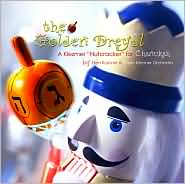
Readers briefly meet Sara, Seth, and their many, many cousins. The "kids" of the family are playing dreydl. Sara is still in a mood. A mood that isn't exactly improved when Tante Miriam shows up with presents for one and all. It's not her fault, mind you, Sara even seems a little inclined to like her present: a golden dreydl. But Seth and her get into a bit of a fight. The dreydl ends up flying through the air and hitting the TV and breaking it. That puts most everyone in a mood.
Readers next join Sara later that evening, for a fantasy adventure. She follows a young girl--a girl claiming to be the Golden Dreydl--through the hole in the TV, I believe. They arrive in a fantasy land, of sorts, with demons, peacocks, a fool, and King Solomon and the Queen of Sheba. There is also much talk of a Tree of Life.
Sara is given a quest, of sorts, to save the girl from the demons/demon king. She has the Fool to help her. A few riddle games are played. First, between Sara and the Fool, and, then later between the Demon King and Sara and the Fool.
For those readers who enjoy fantasy novels, going to different worlds, doing quests, this one is enjoyable enough. If you get a chance to listen to the music, it will probably help you 'enjoy' it even more.
© 2014 Becky Laney of
Becky's Book Reviews

By:
Becky Laney,
on 12/7/2014
Blog:
Becky's Book Reviews
(
Login to Add to MyJacketFlap)
JacketFlap tags:
books reviewed in 2014,
picture books,
2007,
1938,
children's classic,
1961,
1998,
1905,
1939,
1987,
library book,
1989,
1985,
1903,
1960,
Add a tag
Rudolph the Red-Nosed Reindeer. Robert Lewis May. Illustrated by Denver Gillen. 1939/1990. Applewood Books. 32 pages. [Source: Library]I enjoyed this one more than I thought I would. This is the original story by Robert L. May with the original illustrations by Denver Gillen. It is so different from the song and the stop-motion animated special. And I think it was the fact that it was different that made me appreciate it more.
The story is told in rhyme. It's essentially one long (perhaps poorly punctuated) poem. Here's how it begins:
Twas the day before Christmas, and all through the hills
The reindeer were playing…enjoying the spills
Of skating and coasting, and climbing the willows…
And hop-scotch and leap-frog (protected by pillows!)
While every so often they'd stop to call names
At one little deer not allowed in their games:--
"Ha ha! Look at Rudolph! His nose is a sight!"
"It's red as a beet!" "Twice as big!" "Twice as bright!"
While Rudolph just wept.
What else could he do?
He knew that the things
they were saying were true!
Readers first meet Rudolph, a young deer who is teased by his peers. He does NOT live at the North Pole. And he's not one of Santa's own reindeer.
What we do learn is that he's a very good, very obedient deer who is expecting Santa to leave him some lovely presents because he's been so very, very good.
Readers then meet Santa and learn of the horrible weather conditions that prove most challenging. Santa starts out on his trip, it isn't until he's delivering presents to Rudolph's house that he notices the brilliant light of his nose.
Santa then decides to wake him up and ask for his help. The rest of the journey goes much easier for Santa!
The book concludes with Santa returning Rudolph to his family, to his hometown. He is now a hero, of course.
I liked this one. I liked some of the rhymes more than others. There are definitely some quirky lines!
Come Dasher! Come Dancer! Come Prancer and Vixen!
Come Comet! Come Cupid! Come Donner and Blitzen!
Be quick with your suppers! Get hitched in a hurry!
You, too, will find fog a delay and a worry!"
And Santa was right. (As he usually is!)
The fog was as thick as a soda's white fizz.
The book is definitely text-heavy. So a longer attention span would be needed for little ones to enjoy this one.
The copy I read was a facsimile edition. A 75th Anniversary edition with new illustrations was released in September 2014.
On Christmas Eve. Margaret Wise Brown. Illustrated by Nancy Edwards Calder. 1938/1961/1996. HarperCollins. 32 pages. [Source: Library]It was the middle of the night. And night of all nights it was Christmas. I enjoyed Margaret Wise Brown's On Christmas Eve. It is a descriptive look at what Christmas--at what Christmas Eve--is like for children. It focuses on simple things: what your eyes see, what your ears hear, what your nose smells, what your hands and feet touch. It seeks to capture the emotion of the holiday: the excitement, the waiting, the longing.
Lots of details, lots of adjectives. It's rich in imagery and description. There is also a bit of repetition. The text is lyrical in places.
I can't say that I loved it. But it was very enjoyable. I was also glad to see that one of the presents under the tree was a train. The children are just in awe of the magic of Christmas, of the stockings and packages, of the snow falling outside, of the carolers outside.
It was a sweet story about three siblings.
Silver Packages: An Appalachian Christmas Story. Cynthia Rylant. Illustrated by Chris K. Soentpiet. 1987. Scholastic. 32 pages. [Source: Library] Silver Packages is a picture book for older readers most likely. I wouldn't say it is for an exclusively adult audience. But I think readers need some perspective in order to appreciate the book fully. I think it can resonate with readers, it has the potential. But I don't think the emotional reaction would be--or even should be--automatic. One can't assume that every reader will respond with tears and "this is the best book I've ever read!!!"
Silver Packages is about giving back to the community. In this instance, one very specific community--Appalachia. The book is about the Christmas Train. It starts with one man who wants to show his appreciation for the community that helped him when he needed it. He was injured in an accident, the community took in this stranger and nursed him back to health without asking for anything in return. He decides that he will come every year--by train--and hand out packages to the children who meet the train. These packages are wrapped in silver paper. Every story needs a protagonist. Silver Packages introduces us to Frankie. Readers first meet Frankie as a boy. He's a boy with a dream. He wants to be a doctor. And he really, really, really wants a doctor kit for Christmas. But each year, he's slightly disappointed. He receives a handful of silver packages through the years. Every gift seems to have a toy--something a boy or girl might want--and something a boy or girl might need. The practical gifts include: socks, mittens, hats, scarves, etc. Readers later see Frankie all grown up. He is a doctor. He reflects on his life, on his past Christmases, he has a light-bulb moment. He decides it is his turn to give back to the community in his own special way. It's a book about kindness and gratefulness and community awareness.
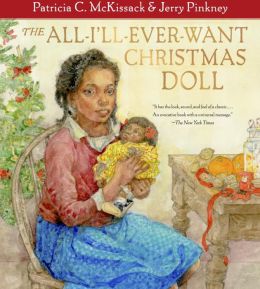
I haven't read The All-I'll-Ever Want-Christmas Doll in years. It was just as good as I remembered. The book is set during the Depression. A little girl, Nella, knows that her family is poor, that Santy may not come this year at all. Yet, she can't resist writing to him all the same begging for a Baby Betty doll. Her two sisters perhaps think a little less of Nella for her dreaming so big. She shouldn't expect so much from Christmas. But on Christmas morning, there are a few surprises. Each girl gets a Christmas sack filled with walnuts, peppermint candy, an orange, and a box of raisins. But there is one present, one special present remaining: a doll. Nella thinks the doll should be HERS and hers alone. After all, her sisters haven't gone around talking about the doll nonstop, her sisters didn't write Santa a letter begging for the doll. Why should she have to share the doll with them? But does the doll make her happy? Is the doll truly all she'll ever want? She has a few lessons to learn for sure!
I really enjoyed the story and the message.
The Bells of Christmas. Virginia Hamilton. Illustrated by Lambert Davis. 1989/1997. Houghton Mifflin Harcourt. 64 pages. [Source: Library] I didn't dislike Virginia Hamilton's The Bells of Christmas. But I didn't love, love, love it either. I think it depends on what exactly you're expecting from a Christmas book. The Bells of Christmas is very much a celebration of a Christmas long ago. Christmas 1890. Readers meet a young boy, Jason Bell, and experience the holiday through his perspective. We learn about his mom and dad, his brothers and sisters, his cousins, his aunt and uncle, his friend, Matthew. The book is set over a period of several days. Among the things readers learn that Jason's dad is a carpenter, that he wants his sons to join him in his business one day, his dad has only one leg, that his dad wears a peg leg part of the time and is in his wheel chair the rest of the time. Readers also learn that Jason is just a wee bit obsessed with wheels--mainly trains, but, also wagons, etc. The book has plenty of detail and characterization which is a good thing. Jason is waiting for quite a few things: 1) he can't wait for Christmas morning and presents! 2) he can't wait for the Bells to arrive--his uncle and aunt and cousins, 3) he is excited about church, most everyone is performing and participating in some way. (Jason is singing a solo.) The book perhaps seeks to capture one Christmas for one extended family. It is a pleasant, enjoyable book. It isn't quite a chapter book or novel. It isn't quite a picture book.
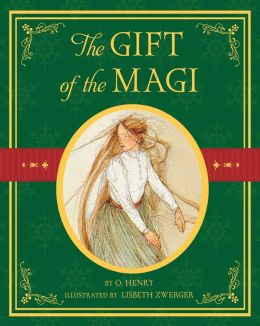
I've seen adaptations of The Gift of the Magi--who hasn't? (My favorite is Bert and Ernie and Mr. Hooper.) But this is the first time I've read the actual short story. I haven't decided how I feel about it. Is this couple wise or foolish? Or are they at times foolish and at times wise?
The wife, Della, takes extraordinary pride in her long hair. She doesn't seem the vain sort except for when it comes to her hair. And even if she is vain about it, there's no indication it's anything besides a private vanity. The wife apparently has been coveting expensive hair combs as well. The husband, Jim, takes extraordinary pride in the family watch. The narrator uses exaggeration when discussing the woman's long hair and the man's gold watch. I didn't love the narrator. In fact, I think the narrator is a distraction. He won't let the reader forget for a moment that this is a precious story.
Now, there were two possessions of the James Dillingham Youngs in which they both took a mighty pride. One was Jim's gold watch that had been his father's and his grandfather's. The other was Della's hair. Had the queen of Sheba lived in the flat across the airshaft, Della would have let her hair hang out the window some day to dry just to depreciate Her Majesty's jewels and gifts. Had King Solomon been the janitor, with all his treasures piled up in the basement, Jim would have pulled out his watch every time he passed, just to see him pluck at his beard from envy.
The wife can't afford a gift for her husband. The husband can't afford a gift the wife. The wife knows this--or should know this. The husband knows this--or should know this. The wife has saved $1.87. The husband might have saved a small sum as well. Readers don't know one way or the other. Both husband and wife will have something to offer the other, however. Something more than love. For both have decided--quite independently--to give sacrificially. To give up what they supposedly value most: her hair, his watch. And this giving up wasn't to support the family, but, to support the other's vanity.
I think actions can speak more than words. I think the narration took away some of my enjoyment of this one. It felt odd at times. There were sentences that were eloquent and refined and then it would slip into something else.
"It's sold, I tell you--sold and gone, too. It's Christmas Eve, boy. Be good to me, for it went for you. Maybe the hairs of my head were numbered," she went on with sudden serious sweetness, "but nobody could ever count my love for you. Shall I put the chops on, Jim?"
I think I like the adaptations better.
The Tailor of Gloucester. Beatrix Potter. 1903. 58 pages. [Source: Library] In the time of swords and periwigs and full-skirted coats with flowered lappets—when gentlemen wore ruffles, and gold-laced waistcoats of paduasoy and taffeta—there lived a tailor in Gloucester.
He sat in the window of a little shop in Westgate Street, cross-legged on a table, from morning till dark.
All day long while the light lasted he sewed and snippeted, piecing out his satin and pompadour, and lutestring; stuffs had strange names, and were very expensive in the days of the Tailor of Gloucester.
I enjoyed rereading Beatrix Potter's The Tailor of Glouchester. In this delightful Christmas tale, readers meet a tailor, a cat named Simpkin, and some lovely mice. It is several days before Christmas. He's working hard to finish a coat and waistcoat for the Mayor of Glouchester. The Mayor is getting married on Christmas day. The tailor has just enough money to finish the coat. Not a penny to spare. He sends his cat, Simpkin, with his money to buy what he needs: a little for himself (food: bread, sausage, milk) a little for his work (one twist of cherry-coloured silk). It is only after the fact that he questions whether he should have sent the cat or gone himself. The cat returns, but, in a mood. The cat is upset for he's discovered that the tailor freed the mice he had captured and hid under the teacups. The cat hides the twist. The man is upset, of course, and sick. He takes to his bed unable to work. The oh-so-thankful mice go to his shop and finish his work for him. But since they are one twist short, they are unable to finish completely. Still, they do what they can, and they do a wonderful job. The cat who spies them at work, I believe, has a change of heart and gives the twist to the old man on Christmas morning. He has just enough time to finish. The Mayor is very, very pleased. And the tailor's luck changes for the better, and his business is much improved. This one is a lovely, delightful read from start to finish.

I enjoyed reading Lucy's Christmas by Donald Hall. Lucy's Christmas is a picture book set in 1909 in New Hampshire. In the fall of 1909, Lucy and her family start preparing for Christmas. For Lucy, this means starting to make her own gifts for her family and friends. It pays to plan ahead since so many gifts take time, and thought must be placed into each gift. She's not the only one thinking ahead. This year the family is ordering a new stove for the kitchen. The family has spent a lot of time browsing in the Sears catalog. Lucy's choice is the one the family decides upon: the Glenwood Kitchen Range. The focus is not just on gifts: planning, making, giving, receiving. The focus is also on family life and community life. Readers get glimpses of the school and church. Both places are very busy! I enjoyed this glimpse into the past! It was interesting to see the family prepare for the new year--1910. The enthusiasm in the story is sweet. The author's note reveals that this picture book is based on family history.
I really liked this one very much. I liked Lucy and her family. I liked the fact that the church plays such a HUGE role in the Christmas celebrations. There are gifts, it's true. But it's not commercialized and selfish.
Baboushka and the Three Kings. Ruth Robbins. Illustrated by Nicholas Sidjakov. 1960/1986. Houghton Mifflin Harcourt. 32 pages. [Source: Library]Long ago and far away, on a winter's evening, the wind blew hard and cold around a small hut. Baboushka and the Three Kings won the Caldecott Medal in 1961. It is Russian folktale with a Christmas setting. The three kings--wise men--come to Baboushka's hut. They only stay a few minutes. Long enough to extend an invitation to the old woman. Will she join them in their procession, in their quest, to find the Babe, the Child? She'd love to join them, she'd love to bring gifts to the Child. But she is not ready to go just yet. Couldn't they all wait until morning? Couldn't they wait for her to finish up a few small, tiny chores first? Couldn't they wait for the storm to clear? Their answer was firm. Their journey to the Child was too important to postpone. They couldn't linger longer. She watched them depart. But they were not easy men to forget. The next morning, she begins a journey of her own. A journey that will take her far. But will her journey lead her to where she wants to go?
It's a simple story, nicely written. "It is no ordinary Babe they seek. Yes! I must go and follow them! To find the new Babe, to offer Him her gift, was now her one yearning. This thought burned in her mind like a candle in the dark." It is also nicely illustrated. The illustrations complement the text well. Both illustrations and text have a different flavor, an authentic flavor, but not exactly American. After several readings, I came to appreciate both a bit more.
In case you're unfamiliar with the story, the book is bittersweet at best. While it is true that Russian children everywhere look forward to Baboushka's gifts each year as her journey continues, it is also true that Baboushka's journey has no happy ending. She never finds the Child. She is never able to give Him her gifts.
Polar Express. Chris Van Allsburg. 1985/2009. Houghton Mifflin Harcourt. 32 pages. [Source: Library] The Polar Express is one of my favorite Christmas books. It is. The book is a thousand times better than the movie. (Though the soundtrack of the movie isn't bad.) So if you've only seen the movie, you might want to give the book a try to. You might have a different response to it.
The Polar Express is about belief and doubt--in Santa. It's told in the first person, so we never learn the protagonist's name, but it is a little boy with a younger sister named Sarah. One Christmas Eve, the little boy is awakened by The Polar Express. He goes to the North Pole on the Polar Express train, there are other passengers too. All presumably boys and girls on the verge of not-believing. At the North Pole, he sees Santa, reindeer, and elves. He happens to be chosen to receive the first gift of Christmas. He asks for a bell from Santa's reindeer. This gift is not in his possession for long, however, because he has a hole in his pocket. On Christmas day, he receives a special gift under the tree: the bell he had lost. He can hear it. His sister can hear it. But his parents do not. The book ends wonderfully with a message for "all those who truly believe."
I loved this one cover to cover, though I love the ending most of all. © 2014 Becky Laney of
Becky's Book Reviews
The Magic Half. Annie Barrows. 2007. Bloomsbury. 212 pages. [Source: Library]
Miri is the middle child in a large family. She has twin older brothers--Ray and Robbie--and twin younger sisters--Nell and Nora. The family has just moved into a new house, a not-so-new house. Miri's room used to be part of the attic, it is a bit unusual, and not just because of the super-ugly wallpaper. But Miri only comes to realize this a week or two after the move. One afternoon after a horrible fight that ends in punishment for Miri, she discovers something that will change everything. The discovery? A single lens from a pair of glasses taped to the wall near the floor. She looks through the lens. She's curious like that. And that's when it happens. She finds herself in 1935. She meets Molly. Molly's mom is dead, her dad is out of the picture--has been out of the picture for six years. Molly is "being raised" by her aunt alongside her cousins. Think Jane Eyre. That's really all I have to say about Molly's situation! Molly is convinced that Miri is her savior, could Molly be right? Has Miri traveled to the past to save Molly? And what does it mean to save Molly? Does that mean taking her back to the future? How would that even work? So many questions Miri has! She'll need to brainstorm if she's going to succeed.
I liked The Magic Half. I like fantasy novels. I like time travel stories. Is it the best book ever? Is it the best time travel story ever? Probably not. But it doesn't have to be the best for me to like it, to enjoy it. This one might pair well with Laurel Snyder's
Seven Stories Up.
© 2014 Becky Laney of
Becky's Book Reviews
My 48 Hour Book Challenge weekend started a little around 3:00 this afternoon, and I just finished my book around 4:45.
I always like to have a theme for 48HBCs, and this year I accepted the official 48HBC theme as my own. Diversity. I haven't done any reading of the many, many things that have been written on the subject these past couple of months. When selecting my books, I didn't even use any book lists. I had a chance to hit a couple of libraries this past month and for the most part just picked up whatever I found that seemed to fit the bill.
 Life is Fine
Life is Fine by
Allison Whittenberg (who needs a website) was an interesting read for me because I picked it up nearly a month ago. By the time I started reading it today, I no longer remembered what it was about. I like when that happens.
I want to get one thing straight right away. I liked this book. I think one could make an argument that there were a lot of cliched problem novel elements in this thing--neglected child with a single mom who needs men in her life, illness and the specter of death turns up, literature changes lives--and, yet, I liked it. I think main character Samara has a little bit of attitude that shows up not so much in her first-person narration but in her interactions with people. I liked very much the way race was handled here. There are no characters wearing metaphorical signs saying "I'm the African American character!" "I'm the Puerto Rican character!" Yet they are there. Now this may be why you want to see books by ethnic writers. They may be able to create ethnic characters who just
are.
Now, after all this, I will tell you the
really neat thing about this book. Teenage Samara falls for her substitute teacher--who is seventy, if he's a day. I would have loved to have seen a lot more about that.
I definitely would be interested in reading more of Whittenberg's work.
The Lemonade War. Jacqueline Davies. 2007. Houghton Mifflin Harcourt. 192 pages. [Source: Library]
I enjoyed this book even more the second time around. (I first reviewed it in
October 2007). The Lemonade War is the story of two siblings--Evan and Jessie--and their week-long war over who can make the most money selling lemonade. Officially, this war is all about WHO can earn $100 in just five days, the last five days of summer vacation. The winner takes it all. If he wins, he gets to keep his earnings and her earnings. And vice versa. He dreams of an iPod. She dreams of giving money to an animal rescue league.
Until the last week of summer, these two kids had had an enjoyable summer, with plenty of time together and plenty of time to themselves. But when a letter comes from the school alerting the mom to a big change, well, Evan loses it. Evan thought it was bad enough that his sister was skipping a grade, that she would be in the same grade--fourth. NOW he learns that they will be in the same class. (The school has gone from two fourth grade classes to one.) Evan and Jessie react very differently. Evan focuses only on his weaknesses: he's horrible at math, he doesn't want everyone to know that his sister is SMARTER and BETTER than he is. Evan may see Jessie that way, but Jessie sure doesn't see herself that way. Jessie has trouble reading people; she doesn't always connect the dots between what people say and what people mean. Most of her second grade year, she was miserable, absolutely miserable. There was even a "We Hate Jessie" club led by a group of particularly mean girls. Jessie is worried that she'll have just as much trouble in fourth grade socially. Evan, she feels, is oh-so-comfortable and oh-so-confident. He never seems to have trouble talking to anyone. If only she could be like him!!!
One positive thing about this war, in my opinion, is that it challenges both Jessie and Evan to rise above their weaknesses. Evan must face his fear of math, of figuring out HOW to do "story problems" in real life. With Evan, readers get to see the practical side of *why* math is important. Jessie faces her fear of talking to people, of taking the first steps, of making friends. She seeks out girls who will be in her class, and, she makes allies, in a way.
The Lemonade War is, in a way, all about problem-solving, of meeting life's problems with determination. That and it's about love and hate.
I really liked the character of Jessie. I did. I liked how she clings to Charlotte's Web. I liked her spirit, her determination. Not that she was perfect. Not that she didn't make mistakes. But they both made mistakes.
I would definitely recommend this book!
© 2014 Becky Laney of
Becky's Book Reviews
Invention of Hugo Cabret. Brian Selznick. 2007. Scholastic. 525 pages.
I hadn't really planned on rereading
Brian Selznick's Invention of Hugo Cabret, but this year I joined the book to movie challenge. I'd been curious about the film, Hugo. This "review" will share what I thought about both the book and the movie.

I found the movie wonderful. I found it very compelling. I was drawn into the story--the time and place. This is a movie (and a book) where setting is just as important if not MORE important than the characters. Because it is set in a train station in Paris, France, in the early 1930s, because it focuses on such an intriguing orphan who is desperate to make sense of the world and fix what needs fixing, because it was a story with such a strong emphasis on friendship and making your own family, it worked for me. The book and the movie are different from one another. The movie adds characters and even gives them story-lines. The movie changes some of the relationships as well. But I thought some of the changes--at least--worked better. I liked the Hugo of the movie better than the Hugo of the book! While the novel's focus on old cinema was interesting, on film it meant SO MUCH MORE. This book was meant
to be filmed.
I originally read the book in 2007. I watched the movie a few weeks ago and then decided to reread the book. I definitely preferred the movie to the book. But the book is a very quick read! It takes longer to watch the movie than it does to read the book!
© 2013 Becky Laney of
Becky's Book Reviews
Joe on the Go. (Green Light Readers, Level 1) Peggy Perry Anderson. 2012. Houghton Mifflin Harcourt. 32 pages."Let's go!" said Joe to Mother dear.
"Sorry, Joe, I am busy here."
"Let's go!" said Joe. Dad said, "No way. Today is family meeting day."
Then came cousins, uncles, and aunts. They came to visit, eat, and dance.Joe is a very energetic little frog. But no one at the frog family reunion wants to play with him. Each has a reason or excuse. Each tells him no and sends him away. But Joe keeps trying, surely, someone wants to play with him. He meets that someone....in Grandma.
The text, as you might expect, is repetitive and predictable making it just about right for young readers beginning to read on their own. And it could be a read aloud, as well, for parents to read to little ones.
Let's Clean Up. (Green Light Readers, Level 1) Peggy Perry Anderson. 2012. Houghton Mifflin Harcourt. 32 pages.Mother said, "I have the broom. Let's clean up this messy room." Mother cleaned high. Mother cleaned low. Mother cleaned the room for Joe. Another Joe adventure. Joe has an extremely messy room. His mom cleans the room, Joe is happy to see his floor again. He's eager to "rediscover" all his toys again. He makes his room a big, big mess. His mom is not happy that minutes later her son's room is out of control...again. The illustrations show her close to tears. But Joe has a way to make his mom happy again. He'll clean his room all by himself. And he'll do it much, much quicker. And, as long as his mom doesn't look in the yard, things should go well.
In October, two more early readers will be released:
Time for Bed, the Babysitter Said and
To The Tub.
Read Joe on the Go and Let's Clean Up
- If you're looking for early readers to share with young beginning readers
- If your little one likes frogs
© 2012 Becky Laney of
Becky's Book Reviews
Mascot: Unraveling the Mystery of My Jewish Father's Nazi Boyhood. Mark Kurzem. 2007. Penguin. 432 pages.
If I'm ever asked, "What's your father like?" a simple answer always escapes me. Even though I can look back on a lifetime spent in his company, I have never been able to take his measure. One part of him is a shy, brooding Russian peasant who shows a certain air of naivete, if not gullibility, with strangers. Then there is another side: alert, highly gregarious, and astonishingly worldly. His unexpected appearance on my doorstep in Oxford one May afternoon in 1997 left me more mystified than ever. The Mascot is such a powerful and compelling biography. It is not your traditional biography--Holocaust or not. It is the story of how one man's past is revealed, how a father chooses to share his memories--some quite vivid, others very vague or fuzzy--with his adult son. The father's life is revealed to his son in a series of conversations and through the son's research to validate his father's story.
Mark, our narrator, always knew his father had his secrets. His father had a brown bag he carried with him everywhere. No one was allowed to see this bag's contents. But. Occasionally, the father would share with his family--his wife and sons--stories from the past. On these occasions, he'd pull out a photograph, an article, an item from the bag. Mark suspected that these stories were just that--stories, being part fact, part embellishment.
But one day his father tries to tell him the truth, the whole truth, the whole UGLY truth about his past. Pieces and fragments. A memory here and there. What is certainly understandable is just how much is missing, how much he doesn't know about who he is and where he comes from.
He was told by his rescuers (Latvian police men or Latvian soldiers?) that he was found in the woods or forest. Alone. Wandering. Obviously struggling to survive. He was taken in by the soldiers and "adopted" into their company. They gave him a name. They gave him a birthday. They gave him a small uniform--from 1941 to 1945 he was given three uniforms. Though he was taken into one man's home--"adopted" (though not legally) by a husband and wife--he stayed connected or associated with a unit of soldiers. He witnessed things NO CHILD of five, six, seven, eight, or nine should EVER witness. He saw men, women, children, babies being killed--in one instance herded together into a building which was then set on fire.
Though he doesn't remember his name--his family name, the names of his brother and sister, father and mother--or the name of his village, the name of his country--he does remember one thing: he witnessed the slaughter of his mother, his younger brother, his baby sister. He witnessed the slaughter of an entire neighborhood or village. At the time, he didn't realize this violence, this bloody slaughter, was because they were Jewish. In fact, his very "Jewishness" was buried deep inside him. At times he seemed aware that he too was Jewish, that his life was at risk if his Jewishness was revealed. But at the same time, the only way he could cope with his present--with his new reality, his new identity, the company he was keeping--was forced to keep in a way--was to bury his 'true' Jewish identity and become the boy others wanted/needed him to be. To survive, he had to deny so very very much.
So the story Mark hears from his father is fragmented, in a way, with very few clues. But it is emotional and intense. Almost too much for him to handle. In fact, it is almost too much for him--the father--to handle. And at one point, he asks h
Mr. Darcy's Diary. Amanda Grange. Sourcebooks. 2007. 320 pages.
Monday, 1st JulyHave I done the right thing in establishing Georgiana in London, I wonder? The summer is proving to be very hot, and when I visited her this morning, I found her lacking her usual energy. I think I will send her to the coast for a holiday.Do I have a favorite Amanda Grange novel? I'm not sure. I definitely LOVED this one, Mr. Darcy's Diary!!! The first Amanda Grange "diary" I read was
Colonel Brandon's Diary. I've since read
Mr Knightley's Diary,
Wickham's Diary, and
Henry Tilney's Diary. (I'd love to make time to read Captain Wentworth's Diary and Edmund Bertram's Diary.)
I also JUST discovered there will be *new* Amanda Grange this year!!! Pride & Pyramids: Mr. Darcy in Egypt which releases in July. Also Dear Mr. Darcy: A Retelling of Pride and Prejudice which releases in August. I believe this gives an insider's look on Darcy's correspondence (as opposed to his diaries).
So I have high expectations for Amanda Grange. And she has never once disappointed me!!! She gets her Austen characters
just right. True, I don't love *all* her books equally. But that is in part because I don't love all of Jane Austen's characters equally. And since her characters are so very true-to-the-book and yet so vividly brought to life all at the same time, it is only natural that I have a similar reaction. At least to a certain degree. I will say this, she can make me appreciate characters that I have been indifferent to in the past. And she can make me appreciate even more characters that I already love and adore.
I loved many, many things about Mr. Darcy's Diary. The thing I love most is how it gives a new perspective on Darcy's relationship with Charles Bingley. In Jane Austen's Pride and Prejudice, readers don't really get a chance to know--really know--Charles Bingley all on his own. I loved reading the scenes with Charles Bingley and Mr. Darcy. You really do get an impression of him, a clearer impression of him. And even though Bingley is far, far from perfect, I can't help smiling at his scenes. As for Mr. Darcy, well, that's only to be expected that there's a high degree of charm to be found. True, he can be smug and arrogant, a bit blinded to reality, but, his transformation is all that much more wondrous as seen slowly through the course of these diary entries.
Read Mr. Darcy's Diary
- If you love Jane Austen
- If you love Austen's characters, if you want to spend more time with them, if you want newer, fresher perspectives on their inner lives
- If you enjoy clean Austen retellings/adaptations
- If you're a fan of Amanda Grange
- If you love the book or movie, Pride and Prejudice
© 2012 Becky Laney of
Becky's Book Reviews
Unwind. Neal Shusterman. 2007. Simon & Schuster. 336 pages.
The prologue:
The Second Civil War, also known as "The Heartland War," was a long and bloody conflict fought over a single issue. To end the war, a set of constitutional amendments known as "The Bill of Life" was passed. It satisfied both the Pro-life and the Pro-choice armies. The Bill of Life states that human life may not be touched from the moment of conception until a child reaches the age of thirteen. However, between the ages of thirteen and eighteen, a parent may choose to retroactively "abort" a child...on the condition that the child's life doesn't technically end. The process by which a child is both terminated and yet kept alive is called "unwinding." Unwinding is now a common and accepted practice in society. First sentence:
"There are places you can go," Ariana tells him, "and a guy as smart as you has a decent chance of surviving to eighteen." Connor isn't so sure, but looking into Ariana's eyes makes his doubts go away, if only for a moment. Did you know there is going to be a sequel to Unwind?! I know!!!! It's very
exciting news. As soon as I learned about Unwholly--which releases in late August 2012--I knew I just HAD to reread Unwind. It's been years since I read Unwind, and essentially I just remembered how great it was and how it was near impossible to put it down. It was just so intense, so compelling, so DIFFERENT from what I was used to reading--at least at the time.
And I am very glad I took the time to reread this one. It is just as great as I remembered.
Imagine living in a world where—if you're a teenager—your life is constantly in danger. If you anger your parents just one time too many, you could be on the next bus out of town heading to a Harvest camp or the "chop shop" as it's called in slang. Your organs—every single part of you (except maybe your appendix), stripped away and 'donated' to make someone else's life better. This scenario is about to become terrifyingly real to three teenagers.
Connor is a guy who hasn't always had the best temper or attitude. But he never thought his parents could be so cruel as to unwind him just because he's going through a "difficult" stage. After accidentally finding the papers that will end his life—at least as he knows it—he decides to run away. After all, if he can manage to survive for two or three years—until his eighteenth birthday—he'll be safe and legal.
Risa is a girl from the State Home. She is a musical prodigy, but after making a few mistakes at a concert, she's told she's reached her potential in life and that she can best serve society now as an Unwind. After all, they can only feed and house so many, and new babies arrive all the time. It's normal to eliminate at least 5% of the teen population every year.
Lev is different from Connor and Risa. He's only thirteen. But the big difference? Lev has known all along that he was 'destined' to be unwound. He's a tithe. A baby set apart from birth—chosen from birth—to be sacrificed on his thirteenth birthday for the good of society. He is told that his is a holy service, a holy life. It's a "religious" and "spiritual" experience or gift. After all, there is no greater gift of love than when a man lays down his life, right? When these three meet for the first time, it is pure chaos. But their lives, their destinies, are woven together for better or worse. C
The Good Land. Loula Grace Erdman. 1959/2007. Bethlehem Books. 185 pages.
Carolyn Pierce, pulling the white linen cloth straight on the long dining-room table, thought that perhaps the worst problem a girl could have was for people to think she didn't have any at all. I really, really, really liked this one. It is the last in Loula Grace Erdman's historical trilogy set in the Texas Panhandle. It concludes the hint of romance between Katie and Bryan--from the second book. And Carolyn herself has an admirer! I definitely liked the lightness, the sweetness, the innocence of these three romances. (Melinda and Dennis met in the first book, were married in the second book, and had a boy and a girl by the third book.)
Carolyn is looking forward to going to high school in Amarillo, but that is a year away still when the novel opens. And while it may seem like 'nothing happens' in her own community--farming and ranching community--that isn't exactly true. They've got new stand-offish neighbors for one thing...
The Good Land may not be an adventurous novel with one thrill after another. (The big event is a prairie fire.) But it is a quiet-and-happy novel all the same. For people who love historical fiction, I think it holds enough interest.
Read The Good Land
- If you love historical fiction set in Texas
- If you love historical fiction with the lightest, sweetest touches of romance
- If you enjoy coming-of-age stories
© 2012 Becky Laney of
Becky's Book Reviews
17 Things I'm Not Allowed To Do Anymore. Jenny Offill. Illustrated by Nancy Carpenter. 2007. Random House. 32 pages.
I had an idea to staple my brother's hair to his pillow.I am not allowed to use the stapler anymore.
I had an idea to glue my brother's bunny slippers to the floor.I am not allowed to use the glue anymore.I liked this one. I was hoping to love it. I mean I just loved
11 Experiments That Failed--the second book--which just released yesterday. And it was a decidedly cute and clever book. One with an original premise. A girl who just CANNOT stay out of trouble. She's always, always picking on her brother. And she's PASSIONATE about beavers. And she doesn't exactly like school. (I imagine her teacher has quite an opinion about her!)
I had an idea to do my George Washington report on beavers instead.
I am not allowed to do reports on beavers anymore.
I had an idea to dedicate my report to all beavers that ever lived.
I am not allowed to dedicate my report to beavers anymore.
I thought there was a little too much emphasis on beavers. I would have enjoyed a little more variety perhaps. (Like there is in the second book!!!) But still, beavers and all, this one is a fun read.
Text: 3 out of 5
Illustrations: 3 out of 5
Total: 6 out of 10
© 2011 Becky Laney of
Young Readers
 Genrefied Classics: A Guide to Reading Interests in Classic Literature. Tina Frolund. 2007. Libraries Unlimited. 392 pages.
Genrefied Classics: A Guide to Reading Interests in Classic Literature. Tina Frolund. 2007. Libraries Unlimited. 392 pages.
Genrefied Classics is essentially a reference book. A book of bookish lists. There are ten genres explored in the book. Each chapter of genres is broken into sub-genres or categories. Each sub-genre has a list of recommended reads. Each entry lists the author, the title, the year and country of initial publication, details about more recent publications, and information about if the title has been done as a movie or an audio book. Each entry also features 'similar reads' and subject headings for that title.
Classics can be interpreted differently by people--depending on each person's definition of what a classic is and is not. This book only includes "classics" published before 1985. (Ender's Game would be an example of a more recent classic included in this one, the oldest examples would be The Iliad, Aesop's Fables, The Aeneid, etc.)
While the intended audience of this one may be adults who work with kids and teens (fifth grade on up through twelfth grade)--in other words librarians, teachers, etc., I think other readers can benefit from browsing this one. I don't think you have to be looking for a classic to put in the hands of a teenager to benefit from it.
There are categories or subcategories within this one which I wish were a bit longer because I would love even more suggestions. I would have LOVED it if the chapter on romance had been longer. I would have thought there would be more categories too. This section just felt a little uninspired, if that makes sense. Because while it's nice to include Jane Austen and Charlotte Bronte, it's not like those aren't oh-so-obvious choices. And to list only one Georgette Heyer?! I also think it would have been nice for Eugenia Price to get a mention or two either in this section or the historical fiction section. And Grace Livingston Hill, for that matter, either here or in inspirational fiction. And it just felt wrong, wrong, wrong for Elizabeth Gaskell not to be included in the romance section or the historical fiction section. Surely North and South and Wives and Daughters and Cranford are more than worthy to be included!!! I mean North and South is absolute must-must-must read in my opinion.
I was pleased to see some of my favorite authors included: Agatha Christie, Dorothy Sayers, Josephine Tey, Ray Bradbury, Orson Scott Card, John Steinbeck, L.M. Montgomery, etc. Some of the authors recommended were unfamiliar, which is a GOOD thing in my opinion. I picked this one up wanting to discover new-to-me-authors in my genres of choice. Unfortunately, some of them might be a bit tricky to find at the library.
Because of my familiarity with some of the subjects (sub-categories), their recommended reading lists seemed too short, too incomplete, as you might expect. If you come to the book wanting new-to-you authors, new-to-you-books, the more you've read of the basics, the more that will be the case. But these lists aren't supposed to be comprehensive, they're supposed to be more basic than that.
One thing that also GREATLY annoyed me (I have low tolerance for this, don't laugh) is when they used the WRONG, WRONG, OH-SO-WRONG listing for the Chronicles of Narnia. Publication order. Publication order. Publication order. That's all I have to say about that.
As you might expect, the longest chapter is devoted to historical fiction. Over sixty pages worth of recommended reading. The shortest chapter is definitely the one devoted to inspirational fiction.
The ten genres are:
Adventure
- Espionage
- Journey
- Lost World
- Nature and Animals
- Sea Stories<
Oscar Wilde and a Death of No Importance. Gyles Brandreth. 2007. Simon & Schuster. 368 pages.
From the prologue:
My name is Robert Sherard, and I was a friend of Oscar Wilde. We met in Paris in 1883, when he was twenty-eight and already famous, and I was twenty-two and quite unknown. "You must not call me, 'Wilde,'" he said to me at that first encounter. "If I am your friend, Robert, my name to you is Oscar. If we are only strangers, I am Mr. Wilde." We were not strangers. Nor were we lovers. We were friends. And, after his death, I became his first--and his most faithful--biographer. I knew Oscar Wilde and I loved him. I was curious about this mystery series starring Robert Sherard, Oscar Wilde, and Arthur Conan Doyle. The novel is set in 1889-1890, in London, for the most part. Oscar Wilde discovers the body of a young boy, Billy Wood, a male prostitute of his acquaintance. Wilde was his tutor, of course. This murder angers him and he turns to his friends, Robert and Arthur, for help. (Arthur, if I remember correctly, is a new acquaintance.) Arthur suggests that they go to his friend Inspector Aidan Fraser for help. Surely this Inspector of Scotland Yard will take on the case and see that justice is done. But sadly no, to everyone's surprise, Billy Wood's death just isn't "big enough" to investigate. But Oscar Wilde is determined and inspired by the fictional Sherlock Holmes, he decides to solve the case himself. He'll follow each and every clue, he'll get the help of some of his friends, and, using his logic and intuition, he'll solve the case. Robert, our narrator, is a little skeptical. How can Wilde solve this one? It's not like they even have a dozen clues to follow. Just a clean floor in a clean room and a missing body. Will that be enough?
I am not sure I liked this one. In fact, there were elements of this one that I didn't really like at all. It is one thing for a murder mystery to have clues hidden subtly and not-so-subtly throughout so that when the big reveal does happen, you feel like you should have seen it coming. Or to admit that though you didn't see it coming, it all makes perfect sense now that all the dots have been connected. But with this one...I don't know if surprise is a strong enough word. Even though Oscar Wilde was quite proud of himself for piecing it all together, even though his version of events, we're led to believe, proved true, I'm still unsatisfied. I don't know if that is because Oscar Wilde did not share ANY of the clues, any of the leads, any of the theories, with our narrator so that Robert remains completely clueless from the first chapter to the last chapter. Or if Robert just didn't have his eyes and ears open. Or if Robert was so obsessed with the Inspector's fiancee that he wasn't thinking at all--let alone thinking logically. Was Robert clueless on purpose so the reader would stay clueless so the big reveal would hold one surprise after another? Or were readers supposed to be solving this case along with Oscar Wilde? Because if readers were supposed to pick up on the 'clues' left by the author...well, I'm only one reader, but it didn't work for me.
I did like the writing, for the most part. There were passages that I really enjoyed. I just wasn't satisfied enough with the mystery of this one.
It is curious how little we remember--even of experiences that seemed so vivid at the time. The mind's eye is not a camera: it is an artist's brush. It provides no photographic record, alas. It can bring back the colour of the day, the feeling of the moment, but the detail is all gone. It's an adequate instrument for poets and painters, but for detectives--useless! (215)
Fo
The Land of the Silver Apples. Nancy Farmer. 2007. Simon & Schuster. 512 pages.
It was the middle of the night when the rooster crowed.The Land of the Silver Apples is the sequel to Nancy Farmer's
The Sea of Trolls. And I must admit that I loved it. I just loved, loved, loved it! Even more than the first book. Perhaps because I already loved our hero Jack! Perhaps because I already cared for Thorgil, Brother Aiden, and the Bard (Dragon Tongue to some.) Perhaps because I really, really came to care for the new characters we're introduced to in this second novel! Or maybe it was just perfect timing--the right book at the right time! Lucy, Jack's younger sister, Jack's all-too-spoiled younger sister, has been acting very, very, very strange! Turns out there is a good reason! For their father has been keeping a HUGE secret from the family. A secret about Lucy. But this secret is forced into the open, as a new quest begins, a new adventure begins.
In The Land of Silver Apples, readers journey along with Jack into dangerous new worlds. We'll encounter hobgoblins (including the Hobgoblin king, Bugaboo) and elves (beware, beware!) and that's just the beginning.
If you enjoy a blending of mythology and fantasy, then you should definitely read these books! They're good fun. Plenty of action and adventure. Some humor. And I love the writing! It's just a satisfying novel!
© 2011 Becky Laney of
Becky's Book Reviews
Every now and then I go through the new picture books at my local library. Recently I found two very clever ones by Melanie Watt.

As soon as I saw the "Place My Award Here" spot on Chester, I knew to expect some attitude. The book delivers. The publisher describes it as a story told "by dueling author-illustrators." In fact, Melanie Watt becomes a character in the story, a character who is trying to write and illustrate a book that keeps being hijacked by a cat named Chester. I guess a child reader could either consider him to be a real cat who wants to write this book or a character who wants to take over. Either way, Chester is, as he himself says, "Charming Handsome Envy of Mouse Smart Talented Envy of Melanie Really Handsome."

He returns in Chester's Masterpiece in which the two author-illustrators continue to duke it out on paper. This time, though, Chester's creative struggle "illustrates" plenty about the writing process. A nice addition to a grade school writing program, perhaps?
Chester made a third appearance in 2008 in Chester's Back!, though I haven't read it.
Plot Project: After thinking about plot these many months for my Plot Project, I have decided that some plots are "organic" in that they grow out of situation, rather than falling into the "What does your character want? How can you keep it from him?" format. The plots for these books are organic. They come out of the basic situation of the author fighting with a character.
Miss Spitfire: Reaching Helen Keller. Sarah Miller. 2007. Simon & Schuster. 240 pages.
"Ticket, please."I wipe at my eyes and thrust the wretched thing at him. I've already had to change trains six times since Boston. On top of that, I have to take this train north to Knoxville to catch yet another train south to Alabama.I love Miss Spitfire. I just LOVE, LOVE, LOVE Miss Spitfire. It's such a feel-good, oh-so-magical, ultimate-comfort read--at least for me. It's a novel about Annie Sullivan and Helen Keller. A novel about a teacher who wouldn't accept failure, who kept persevering, no matter how big the challenge, no matter how big the tantrum, Sullivan was NOT going to be beaten by a child.
Annie Sullivan is a young woman on a mission. Her job? To teach a child--a six year old child--who is blind, deaf, and dumb. It won't be easy. There has only been one successful case in the past to base their hopes and dreams on: Laura Bridgman. But Annie is strong-minded and determined. She'll need every ounce of stubbornness she has if she's going to master the willfulness of Helen. Used to getting her own way, Helen runs wild. And as Annie soon points out, the family expects better behavior from the dogs than they do their young daughter. Helen has never been disciplined a day in her life--at least since an illness left her blind and deaf. This journey from despair to hope, from chaos to communication, is an important one. It is full of emotion--as day by day Annie struggles to teach and love a child who fails to comprehend the meaning of words altogether. Anger. Frustration. Rage. Joy. Happiness. Fear. Hope. Despair. It's all here. Annie and Helen. This is their story.
If you've seen The Miracle Worker, you'll know the basic plot of this one. But it is Sarah Miller's writing that impressed me the most. I loved how she told this story.
After years of being blind myself, I can understand a mind without pictures, but I can hardly comprehend a mind without words. Words, songs, stories--they were the things I craved most before my sight was restored, for words explained the things my eyes couldn't show me. When I was blind, words were as vital as breath. (7)
"I'm not sure I can do this job. Yet a part of me understands Helen better than she does herself. I'm no stranger to frustration, anger, isolation. I wonder, though, how Helen can be content to deprive herself of my affection? The thought of her indifference makes my throat sting, yet I can't help feeling drawn to her. If I could only touch her heart, I know I could reach her mind. But she won't even let me hold her hand." (43)
"It seems nothing I do comes out right. But in my heart I know what's right for Helen: obedience, love, and language. Come what may and hell to pay, I'll find a way to give her all three." (64)
All these words, do they linger in her fingers after her lessons are through? (125)
And for the record, I loved, loved, loved the ending. It was oh-so-magical.
© 2011 Becky Laney of
Becky's Book Reviews
View Next 25 Posts



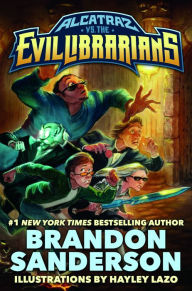



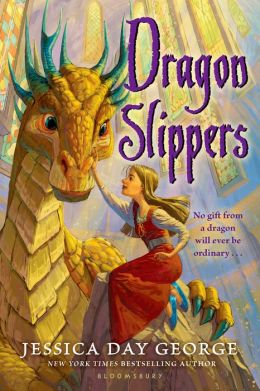
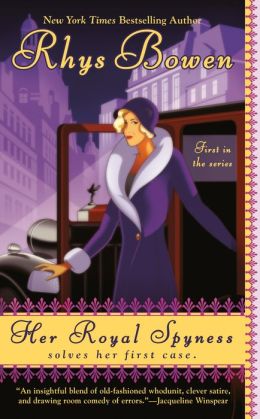


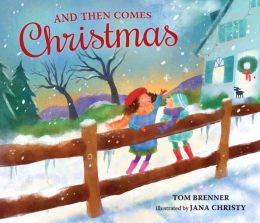
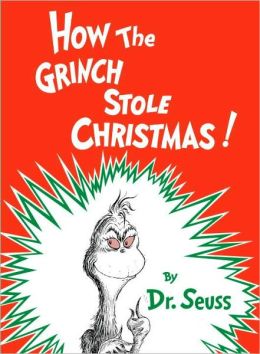

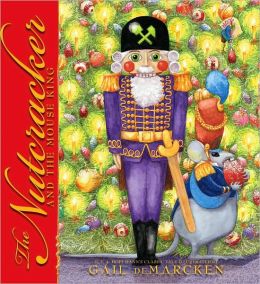
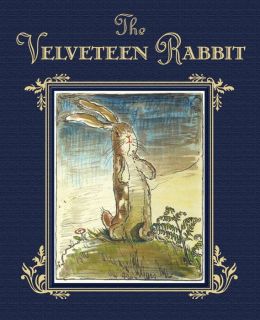
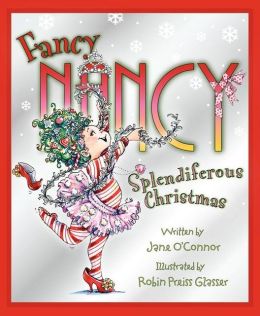
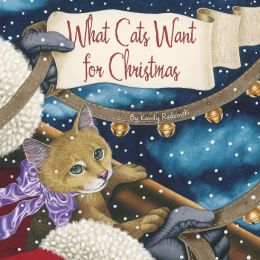



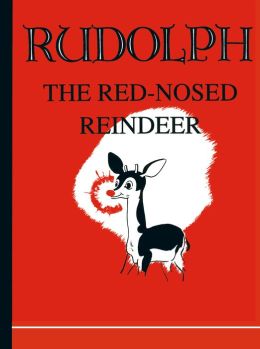
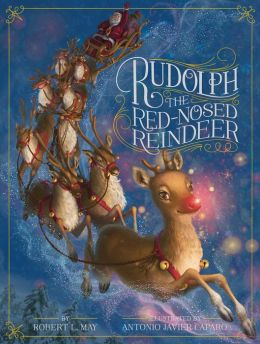
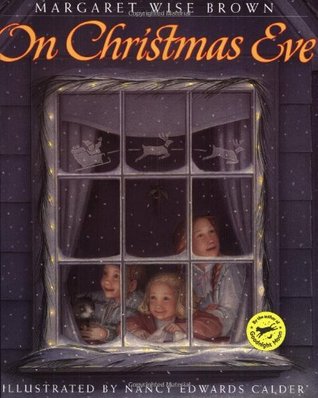
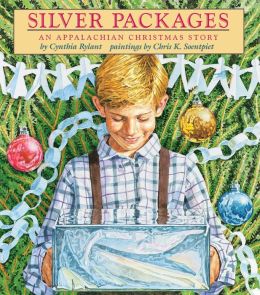

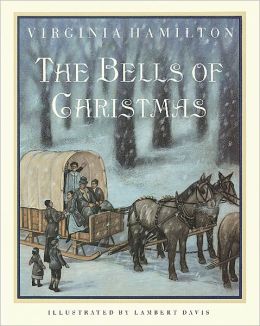

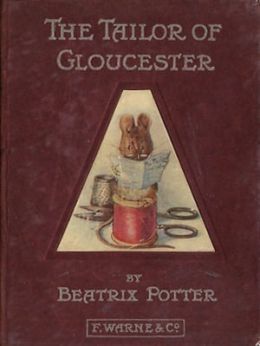



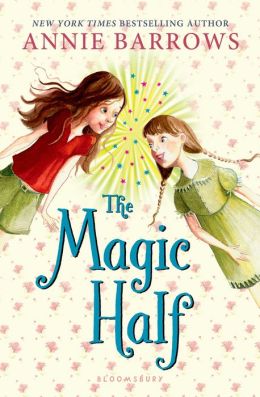


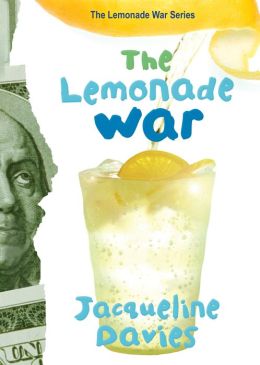


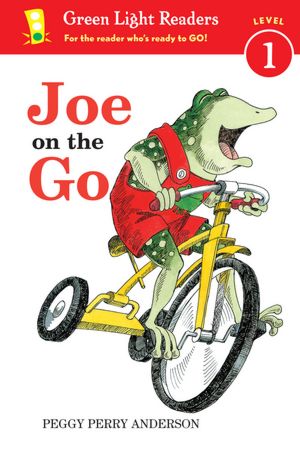
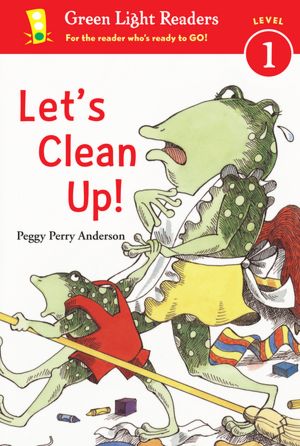
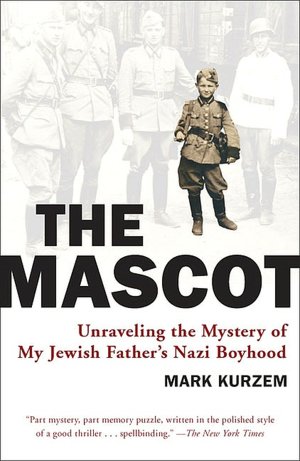






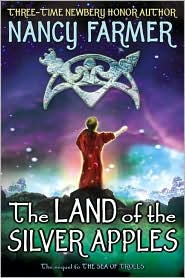



I also enjoyed very much the movie, and of course that format allowed more easily the integration of George Méliès's art.
Still, the idea behind it all, the book itself, is so gorgeous, the way the illustrations fit the story, how the pictures accelerate with the plot, slow down and give room for more text when necessary. His pencils drawings are really fabulous.
Have you read his Wonderstruck? Very good too: http://wordsandpeace.com/2011/10/14/74-review-wonderstruck/
Varieties of gifts are being loaded in a single platform. The gift list of the online store www.flowerdeliveryindia.com connects various parts of India includes items like flowers, cakes, chocolates, fruit baskets, watches, purses and lots more. Send Flowers to India and make wishes on any occasion or any day with this lovely range of gifts.